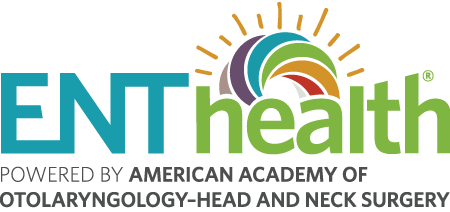Menu
Understanding Balance and Maintaining Independence for Older Adults
Understanding balance is an important step toward maintaining health and independence as we age. One in four adults over the age of 65 will experience a fall each year.1 Falls can often result in injuries such as broken bones but may also make older adults reluctant to participate in activities they once enjoyed. However, difficulty with balance is not necessarily inevitable and many changes in equilibrium can be caused by issues such as muscle weakness, arthritis, vision changes, low blood pressure, and taking multiple (more than four) medications at a time, also called polypharmacy. Identifying and limiting these situations, when possible, can help many older adults avoid loss of independence.
Physical fitness is one of the most important pillars of a long and healthy life. Walking, biking, and other aerobic activities approved by your doctor promote a healthy cardiovascular system. There is even some evidence that regular sauna use can mimic the benefits of aerobic activity and support cardiovascular health. Movement-based practices such as yoga and tai chi preserve balance and stability; classes can be found in many communities and organizations.
Strength training with weights or resistance bands is a great way to prevent loss of muscle mass and strength, known as sarcopenia, that accelerates after age 50. Strength training is also a good way to prevent osteoporosis, or bone disease. There is good evidence that with stronger bones and muscles, even if you do fall, you are less likely to have a serious injury.
Be sure to speak with your doctor before making any changes in your physical activity levels.
Three Helpful Daily Exercises
Here are three exercises that you can incorporate into your daily routine. Repeat these 10-15 times daily or as recommended by your doctor:
Single-leg Stance—Standing on one leg is a great way to test your stability. As you improve, try to increase the difficulty by doing it while brushing your teeth or adding hand weights.
- Step 1: Stand behind a counter or sturdy chair with your back straight and your feet together.
- Step 2: Slowly lift your right foot off the floor. If you need extra support, hold onto the back of the chair or counter with both hands as you lift your foot.
- Step 3: Bend your right knee to a 90-degree angle.
- Step 4: Hold the stance and maintain your balance for 10 seconds.
- Step 5: Lower your right foot back to the floor.
Heel-toe Raises—Shuffling your feet when you walk can cause falls. Heel-toe raises can strengthen your shin and ankle muscles, helping you walk more safely and efficiently.
- Step 1: Sit or stand upright with your back straight and your hands in your lap or on your hips. Keep your feet flat on the floor.
- Step 2: Press into the balls of your feet to lift your heels and stand on your tiptoes. Hold for five to 10 seconds before lowering your feet flat on the floor.
- Step 3: Press into your heels and lift your toes as high as you can, hinging at your ankles, raising slowly and with control. Hold for five to 10 seconds before placing your feet flat on the floor.
Sit-to-stand—This exercise mimics a key functional movement of daily living and can boost your core and leg strength.
- Step 1: Scoot toward the front of your chair with your back straight and your feet hip-width apart. You can rest your hands on your lap or the armrests.
- Step 2: Engage your core by contracting the muscles in your midsection; this helps strengthen and stabilize your body and support your spine and pelvis. Press your feet into the floor as you stand up from your seat.
- Step 3: Pause for a breath while standing tall.
- Step 4: Hinge at your hips and bend your knees to sit down, returning to the starting position.
Additional Steps to Help You Stay Healthy
Nutrition plays an important role in overall health. To get the most out of your physical fitness goals, make sure you are eating enough protein, in addition to a diet rich in vegetables, fruits, and whole grains. Lean meats such as fish and chicken, beans, lentils, and tofu are great sources of protein. Another way to help your bones stay healthy is with adequate dietary calcium found in yogurt, cottage cheese, beans, and spinach. Daily exposure to sunlight for about 20 minutes supports your body’s production of vitamin D. Also, pay attention to how much water you drink because dehydration can contribute to problems with balance.
As we age our sleep patterns may change, too—earlier to bed, earlier to rise, for instance. While this can be explained by natural changes in your “body clock,” make sure you are getting enough sleep to feel well rested. When you are overly tired your reaction time can be delayed. Be aware that many common medications can make you feel sleepy, so regularly reviewing your medication list with your doctor and removing any unnecessary items is a good idea. Medications for vertigo such as meclizine (brand name Antivert®) and diazepam (brand name Valium®) are generally not helpful for balance problems and are not recommended for those over 65-years-old due to risk of confusion and falls. Making some simple but important changes to your sleep hygiene can also improve the overall quality and duration of your sleep.
Preparation and planning are key. There are many additions to your living place that can be installed to provide extra options for stability. Keep regular appointments to check your hearing and vision, and make sure you have well-fitting shoes. Staying active physically and socially is one of the best ways to ensure a fulfilling life as we age.
Related Conditions
The information on ENThealth.org is provided solely for educational purposes and does not represent medical advice, nor is it a substitute for seeking professional medical care.
Copyright 2024. American Academy of Otolaryngology–Head and Neck Surgery Foundation

